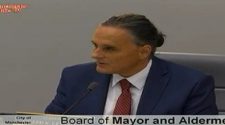-THE HISPANICZATION OF NORTH AMERICA-
North America Sociological Transformation
It is the opinion of various learned political analysts, that North America is going through an unprecedented deep sociological transformation; not only in its traditional moral and social mores, but politically as well. Not long ago, as closed to 30 years back, and that’s just one generation, it was unthinkable or remotely accepted, the sexual practices so common today of gay rights and same sex marriages. Abortion and divorce, was considered somewhat a taboo topic, and people where skeptical about its propriety. Children then, were raised differently than in most cases today, and parents saw their responsibilities by far, more rigorously and the application of discipline, a lot more strict as well. And in this respect, almost the same can be said about teacher’s involvement with children; when no matter what, was respected and upheld by parents. However, the past three decades have seen a dramatic change in these contemplations; partly due to liberalization of laws and court’s ruling thereof, and partly due to the fragmentation of the family and home; due mostly to extremely high rate of divorce, and lastly, women entering the workplace in record numbers. The result has been in many ways, mostly negative and harmful to society, and its true consequences are still to be fully seen. Just one case in point: young boys-so far there has been no girls involved-randomly and for no apparent reason, shooting and killing many of their peers in their schools. It has reached plague proportions, and there hasn’t been lately, a single month, that we are not informed about one of these new massacres. What’s happening? Everybody perplexed, is asking the same question; but for this presentation’s purposes, sufficient is to say, that it is sadly, part of this sociological transformation and deterioration that’s surrounding us.
Is this happening in countries to the South? Partly yes, and partly not. Hispanic cultures differ in many ways from their Anglo counterpart. For one, the vision that Latinos have as to family life, including sex, children, their discipline, marriage, divorce and so forth, is vastly dissimilar. This is not to say that there is no social deterioration in our countries, like alarming criminal rates for one; but this is due to completely different factors, from those found to the North. Drug is in my opinion, the most related one, and is common to both sides. And secondly, morals standards are by far more “relaxed” in the Anglo culture that it is down South.
There is nevertheless, something most often present in Hispanic culture; not found generally up North, which in the opinion of sociologists, have profound implications in the transformation, evolution for good or worst, of modern society; and it is: that even when both parents are out working, there is always somebody left at home, like grandparents, waiting and overseeing children when back from schools. The other thing is that in Latin-America, due to economics, children spent if any, a lot less time affixed to a TV set or gaming stations; thus are less exposed to the violence so prevalent in these electronic games and Television programs; not to mention the egocentric effect this has in the mind of young boys. The underlying result is apparently, no school’s shootings by young boys in Latin-America’s schools, or why in all of these cases in the United States, none of their perpetrators are Latinos. It is also the possible reason, why crimes-contrary to general perception– are ¾ bigger among black, white and other race Americans, than Hispanics. This is so, even when Latinos are bunched up together regardless of their ethnicity. Not everybody who speaks Spanish belongs to the same race. Most Native Americans from the West, South and Central America, are Spanish speaking, yet they differ racially from other Hispanics. If this would have been taken in consideration by the institutions tabulating crime as aforesaid, the percentage of true Hispanics involved in crime would have shown far less.
Interestingly Latinos and all Spanish speaking people, are increasing by far more, than other group in the United States. In the West States, especially California, Arizona and New Mexico and it goes without saying, that long before the Anglos got there, they had a flourishing society where the Hispanic culture was predominant. Its population is not only rising, but it’s bigger by far, than any other group. Furthermore, crime rate there has always been lower than in those States with small or insignificant Hispanic populations.
In other States far to the East, like Massachusetts, Connecticut, New Hampshire, Maine and Vermont, Florida, Rhode Island, and even Chicago and New York as a cities, with very high concentration of Hispanics, have shown lower crime rates that most other cities or States.
We could surmise then, that Hispanic Latino’s culture is less incline to change as fast as the Anglo counterpart for one, and that it is less prone to produce these aberrations that we are seeing lately, with these very young boys, for no reason at all, entering a school, and start shooting everyone in sight. In general, even when Latinos tend to be hotheaded, they equally are less inclined to violent crime. At least, this is what statistics are showing. I believe that Latino temperaments help them to dissipate tensions which when suppressed otherwise, many times explode with uncontrollable anger. Uncontrollable anger is the seed of crime.
Contrary to some political discourse, the Latino population in the United States is definitely not a negative factor as their leaders purport and say, and very well could be in the short and long run, a stabilizing force to heal many of these sociological wounds prevalent in the past years in North America. Some of Latino’s characteristics, specially family wise, should be studied by those in charged with influencing society; to be stressed in their recommendations for a deep change of North Americas social future.
















